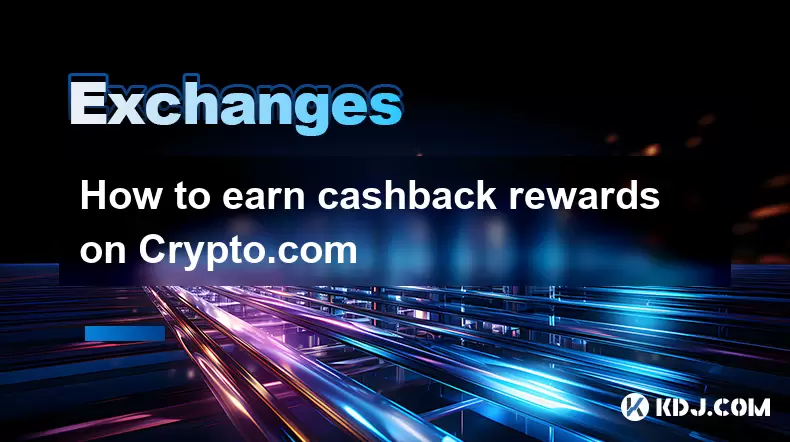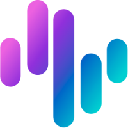-
 Bitcoin
Bitcoin $117800
-3.15% -
 Ethereum
Ethereum $4539
-3.66% -
 XRP
XRP $3.072
-6.08% -
 Tether USDt
Tether USDt $1.000
0.02% -
 BNB
BNB $834.3
-1.03% -
 Solana
Solana $193.1
-2.71% -
 USDC
USDC $0.9997
-0.01% -
 TRON
TRON $0.3583
-0.87% -
 Dogecoin
Dogecoin $0.2233
-8.06% -
 Cardano
Cardano $0.9033
3.60% -
 Chainlink
Chainlink $22.34
-5.78% -
 Hyperliquid
Hyperliquid $44.87
-4.90% -
 Stellar
Stellar $0.4226
-6.29% -
 Sui
Sui $3.765
-5.57% -
 Bitcoin Cash
Bitcoin Cash $588.5
-3.94% -
 Ethena USDe
Ethena USDe $1.001
0.00% -
 Hedera
Hedera $0.2489
-5.54% -
 Avalanche
Avalanche $23.69
-5.77% -
 Litecoin
Litecoin $120.8
-6.90% -
 Toncoin
Toncoin $3.398
-2.63% -
 UNUS SED LEO
UNUS SED LEO $9.276
0.31% -
 Shiba Inu
Shiba Inu $0.00001285
-7.22% -
 Uniswap
Uniswap $10.92
-9.38% -
 Polkadot
Polkadot $3.991
-5.68% -
 OKB
OKB $94.79
-8.25% -
 Dai
Dai $0.9998
0.01% -
 Bitget Token
Bitget Token $4.553
-4.67% -
 Cronos
Cronos $0.1514
-8.71% -
 Ethena
Ethena $0.7243
-7.57% -
 Aave
Aave $310.5
-5.14%
What is the transaction fee structure of OKX?
OKX's dynamic fees depend on volume, trading pair, and maker/taker status; makers often get rebates, while takers pay higher fees, all payable in various cryptos; check the OKX site for the current schedule.
Mar 14, 2025 at 12:00 pm

Key Points:
- OKX's fee structure is dynamic, varying based on several factors including trading volume, trading pair, and the chosen trading mode.
- Maker and taker fees are the core components, with makers generally receiving rebates or lower fees, while takers pay higher fees.
- Fees can be paid in various cryptocurrencies, offering flexibility to users.
- Specific fee schedules are available on the OKX website and are subject to change.
- OKX offers various discounts and rebates programs to reduce trading fees.
What is the transaction fee structure of OKX?
OKX, a prominent cryptocurrency exchange, employs a dynamic fee structure for its trading services. This means that the fees you pay aren't fixed but fluctuate depending on several factors. Understanding this structure is crucial for maximizing your profits. The primary factors influencing your transaction fees are your trading volume, the specific trading pair involved, and the type of order you place (maker or taker).
The core of OKX's fee structure revolves around the distinction between maker and taker orders. A maker order adds liquidity to the order book by placing an order that doesn't immediately fill. These orders typically receive a rebate or a lower fee, sometimes even a negative fee (meaning you earn a small amount). Conversely, a taker order removes liquidity by immediately filling an existing order in the order book. Taker orders always incur a fee.
The specific fee rates for both maker and taker orders are not fixed values. OKX employs a tiered system. This system reduces fees as your trading volume increases over a 30-day period. The more you trade, the lower your fees become. This incentivizes active trading on the platform. These tiered fee structures are clearly outlined on the OKX website, often presented in tables detailing fee percentages for different volume brackets.
Beyond the maker/taker distinction, the trading pair also plays a role. Different cryptocurrency pairs might have slightly different fee structures. This is often due to market volatility and liquidity differences between pairs. OKX's website always displays the current fee for each specific trading pair before you confirm your order, providing transparency.
OKX offers the flexibility to pay transaction fees in various cryptocurrencies. This allows users to optimize their fee payments based on the current market conditions and their holdings. The available payment options are usually listed prominently when placing an order. The choice of cryptocurrency for fee payment generally doesn't affect the fee percentage itself.
OKX frequently implements promotional offers and discounts. These can significantly reduce your overall trading fees. Keep an eye on announcements and updates from OKX to take advantage of these opportunities. Such discounts might be time-limited or tied to specific trading pairs or activities.
The exact fee schedule is subject to change. OKX reserves the right to adjust its fee structure based on market conditions and operational requirements. It's recommended to regularly check the official OKX website for the most up-to-date information on their fee schedule before engaging in any trades. Ignoring potential changes could lead to unexpected costs.
Different Trading Modes and Fees:
OKX offers various trading modes, each potentially impacting fees. While the core maker/taker model applies across most, nuances exist. For instance, some advanced order types might have slightly adjusted fee structures compared to standard limit or market orders. Details regarding fees for these specific order types are usually found within the order placement interface itself.
Understanding Fee Calculations:
The fee calculation is usually straightforward. The exchange multiplies the fee percentage by the total value of your trade (the amount of cryptocurrency you bought or sold). This calculation will be clearly displayed before you confirm your order, allowing you to review it carefully. This prevents any surprises regarding the final cost of your transaction.
Frequently Asked Questions:
Q: Where can I find the most up-to-date OKX fee schedule?
A: The most accurate and current information on OKX's fee structure is always available on the official OKX website. Look for sections dedicated to "Fees," "Trading Fees," or similar terminology.
Q: Are OKX fees competitive compared to other exchanges?
A: The competitiveness of OKX's fees depends on several factors, including your trading volume and the specific trading pair. It's recommended to compare OKX's fee structure with other exchanges' offerings to determine which platform best suits your needs.
Q: Can I reduce my OKX trading fees?
A: Yes, you can reduce your fees by increasing your trading volume to access lower tiers in their tiered fee system. Participating in OKX's promotional events and utilizing maker orders can also significantly reduce your fees.
Q: What happens if OKX changes its fee structure?
A: OKX generally announces fee changes beforehand, often through official announcements on their website and potentially via email notifications. It's crucial to monitor these communications to stay informed about any adjustments to their fee structure.
Q: What cryptocurrencies can I use to pay transaction fees on OKX?
A: OKX generally supports paying transaction fees using various cryptocurrencies. The exact options may vary, but usually include the most prominent cryptocurrencies traded on the platform. Check the specific payment options when placing an order.
Disclaimer:info@kdj.com
The information provided is not trading advice. kdj.com does not assume any responsibility for any investments made based on the information provided in this article. Cryptocurrencies are highly volatile and it is highly recommended that you invest with caution after thorough research!
If you believe that the content used on this website infringes your copyright, please contact us immediately (info@kdj.com) and we will delete it promptly.
- Kazakhstan's Crypto Leap: Bitcoin ETF and Central Asia's Digital Finance Future
- 2025-08-13 12:45:19
- BlockDAG Presale Blazes Past $371M: Fundraising Frenzy Fuels Crypto Sensation
- 2025-08-13 13:05:21
- Meme Coins: Chasing the 2025 Surge – Which Will Moonshot?
- 2025-08-13 10:25:23
- Bitcoin's Wild Ride: Rally, Pullback, and What's Next
- 2025-08-13 10:25:23
- Bitcoin, Bitmax, and Institutional Demand: A New Era of Crypto Investment
- 2025-08-13 10:45:12
- Solana, ROAM, and Airdrops: What's the Buzz in 2025?
- 2025-08-13 11:35:13
Related knowledge

How to use margin trading on Poloniex
Aug 08,2025 at 09:50am
Understanding Margin Trading on Poloniex

How to read the order book on KuCoin
Aug 10,2025 at 03:21pm
Understanding the Order Book Interface on KuCoinWhen accessing the order book on KuCoin, users are presented with a real-time display of buy and sell ...

How to read the order book on KuCoin
Aug 12,2025 at 02:28am
Understanding the Basics of Staking in CryptocurrencyStaking is a fundamental concept in the world of blockchain and cryptocurrencies, particularly wi...

How to set price alerts on Kraken
Aug 11,2025 at 08:49pm
Understanding Price Alerts on KrakenPrice alerts on Kraken are tools that allow traders to monitor specific cryptocurrency pairs for price movements. ...

How to avoid high gas fees on Uniswap
Aug 13,2025 at 11:35am
Understanding Gas Fees on UniswapGas fees on Uniswap are payments made to Ethereum miners or validators for processing transactions on the blockchain....

How to earn cashback rewards on Crypto.com
Aug 12,2025 at 02:08am
Understanding Cashback Rewards on Crypto.comCashback rewards on Crypto.com are a feature designed to incentivize users to spend using their Crypto.com...

How to use margin trading on Poloniex
Aug 08,2025 at 09:50am
Understanding Margin Trading on Poloniex

How to read the order book on KuCoin
Aug 10,2025 at 03:21pm
Understanding the Order Book Interface on KuCoinWhen accessing the order book on KuCoin, users are presented with a real-time display of buy and sell ...

How to read the order book on KuCoin
Aug 12,2025 at 02:28am
Understanding the Basics of Staking in CryptocurrencyStaking is a fundamental concept in the world of blockchain and cryptocurrencies, particularly wi...

How to set price alerts on Kraken
Aug 11,2025 at 08:49pm
Understanding Price Alerts on KrakenPrice alerts on Kraken are tools that allow traders to monitor specific cryptocurrency pairs for price movements. ...

How to avoid high gas fees on Uniswap
Aug 13,2025 at 11:35am
Understanding Gas Fees on UniswapGas fees on Uniswap are payments made to Ethereum miners or validators for processing transactions on the blockchain....

How to earn cashback rewards on Crypto.com
Aug 12,2025 at 02:08am
Understanding Cashback Rewards on Crypto.comCashback rewards on Crypto.com are a feature designed to incentivize users to spend using their Crypto.com...
See all articles

























































































